Want to learn how to sell high-end coaching programs?
Today, I’ll show you how to create a coaching package so that you can get results like these:
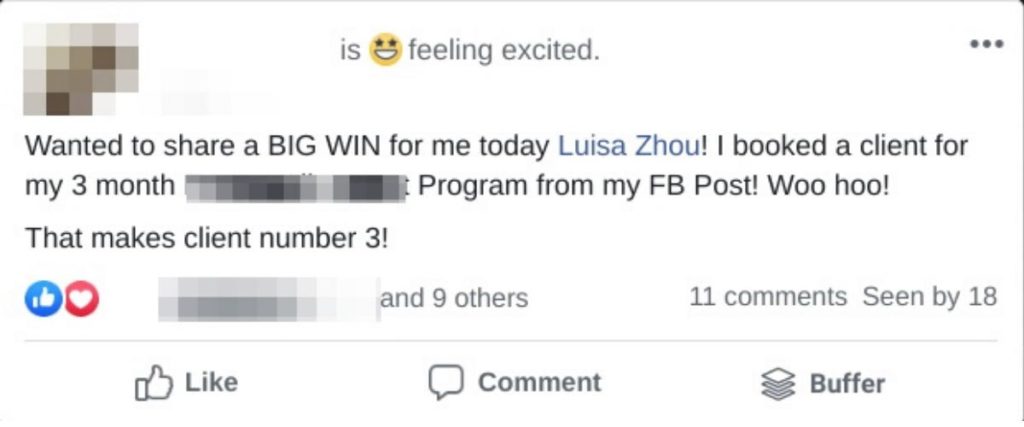
1,000+ of my students in 20 industries have all taken these same steps that I share here below.
Ready to learn more about creating transformational coaching packages?
Let’s dive right in.
You’ll learn:
- What is a coaching package
- 3-month coaching package
- 6-month coaching package
- Create a coaching package that sells
- Find the RIGHT name for your coaching package
- Take on this many clients
- Price your coaching offer
- What to include in a coaching session
- When to offer a group coaching program
- Coaching package examples
Takeaways:
- Start with a 3-month package and price it at $1,500
- Get a few testimonials and then raise your rates to $5,000 for a 6-month package
- Offer monthly, biweekly, or weekly calls (45-60 minutes long)
- Simple coaching package names include “Private coaching to get (result)” or “Bootcamp to get (result)”
What is a coaching package?
An online coaching package is the offer you sell as a coach and that clients use to achieve the results they want for themselves.
And if you want to succeed as a coach, you need to sell the right types of coaching packages that people WANT to buy.
However, your time and energy are much better spent getting new clients and supporting them than trying to tweak the “perfect” package. Instead, use the simple structure I recommend here below and get started selling your services.
Start with a 3-month package, then move on to a 6-month package.
Let’s look at both.
Get the Ultimate Guide
for building a
6-Figure Coaching Business so you can achieve more freedom!
3-month coaching package (example)
A great place to start is with a 3-month coaching package.
Why?
Because three months is long enough to help clients get results.
At the same time, a 3-month coaching package is not TOO long.
If you offer a 6-month coaching package or a year-long commitment, you might find yourself “stuck” with these clients.
Think about it:
What if you’ve overpromised and realize this when you start working with your clients?
If you don’t like them?
Or if you just figure out that you don’t like doing things in a certain way?
Longer coaching packages are also harder to sell because your client needs to commit to working with you for so long.
Here’s an example of a 3-month coaching package (that I and 1,000s of my students have used):
- Name: Bootcamp to lose 15 lbs in 3 months
- End result: Helping health coaching clients lose 15 lbs
- Cost: $1,500
- Calls: Weekly 45-60-minute calls
- Support: Voxer, email, or WhatsApp support in between calls
This example is a health coaching package but the same structure applies to all coaching niches.
6-month coaching package (example)
Your first package (the 3-month package) helps you build your reputation as a coach.
You learn how to coach and help people get results – so they give you awesome testimonials.
Those testimonials build trust, so that people are more likely to say “yes” to working with you for a higher rate.
At this point, you can move on to 6-month packages.
Here’s what your package might look like:
- Name: Bootcamp to lose your next 40lbs in 3 months
- End result: Helping health coaching clients lose 40lbs
- Cost: $5,000
- Calls: Biweekly or monthly 45-60-minute calls
- Support: Voxer, email, or WhatsApp support in between calls
Next, let’s look at how to structure your coaching package.
How do you create a coaching package?
The best way to structure your coaching package is to offer monthly, biweekly, or weekly calls that are about 45-60 minutes long.
In between these calls, you offer support in the form of emails, texts, or Voxer.
This structure helps your clients feel supported.
Even though not all clients will take advantage of the extra support you offer, they have the opportunity to get in touch with you more flexibly than if they had to wait for weekly calls.
And supporting your clients in between calls is key.
When you’re new to coaching, you’ll want to learn as much as possible and help your customers get great results fast.
This is the time to over deliver–and not look at your profit margins or how much time you’re spending on each client.
There’s a time and place for that.
Instead, focus on offering packages that help people get results. You see, when they get results, you get testimonials.
Testimonials help you get new, dream clients and charge higher prices.
Win-win!
At the same time, “overdeliver” doesn’t mean “work yourself to death.”
The smart thing to do is to only offer ONE support channel (such as email) so that you don’t overwhelm yourself.
(Just think about it… Ever tried to keep up with ALL the social media channels, your email, and your different messaging apps? Of course you have. And you know what a time-suck they can be.)
And I always let my clients know that I will reply within 48 hours.
Often, I’m much faster than that, but this gives me leeway for when I, for whatever reason, have to take a few days to get back to people.
What should be included in a coaching package?
Something a lot of new coaches ask me is, “How do I know what to put into my package?”
The secret “hack” you can use here?
Let your customers guide you with the questions they most often ask you.
It typically takes 1-3 clients to figure out what you should include in your coaching package to help them in the best way possible.
And to know how to initially structure your coaching offer (before you’ve signed on a customer)?
Identify this ONE thing:
What’s the big end result clients get after working with you for 90 days?
This will be different for each industry.
For example:
Maybe you can promise that people will lose a certain amount of weight or that you’ll help them get a specific number of job applications done within the three months you’ll be working together.
When you’ve identified that end result, map it out to 2-3 benchmarks that you will help your clients hit at the end of the month. These benchmarks should be results-oriented.
Want to know what this looked like for me?
When I started selling my first package, I came up with the following benchmarks:
Month #1
Helping clients get clarity, take their job skills to build a coaching or consulting company, find a business idea, and start building an audience.
Month #2
Helping people build and engage an audience of a certain number of people.
Month #3
Helping clients get 1-3 paying clients.
I didn’t know the exact details, but I knew that these were the results I wanted my clients to achieve during our time together.
And before this business, I ran a digital advertising consulting company. I used the same formula:
Month #1
I helped my clients set up their assets, landing page, and ads.
Month #2
Clients started to test ads, establish benchmarks, and get their first results.
Month #3
We optimized ad campaigns by creating better ads and improving metrics (like costs for leads).
So that’s what your coaching package can look like.
For more, take a look at this quick video on coaching packages:
Now, why shouldn’t you just offer a longer package right away?
There are a few reasons why…
Why shouldn’t you offer a 6-month coaching package right away?
You might be wondering why you can’t just go for a 6-month package right away.
Here’s the thing:
When I got my first client, I had initially given a lot of free support. For two weeks, I basically coached her for free. She happily agreed to my $5,000 price tag.
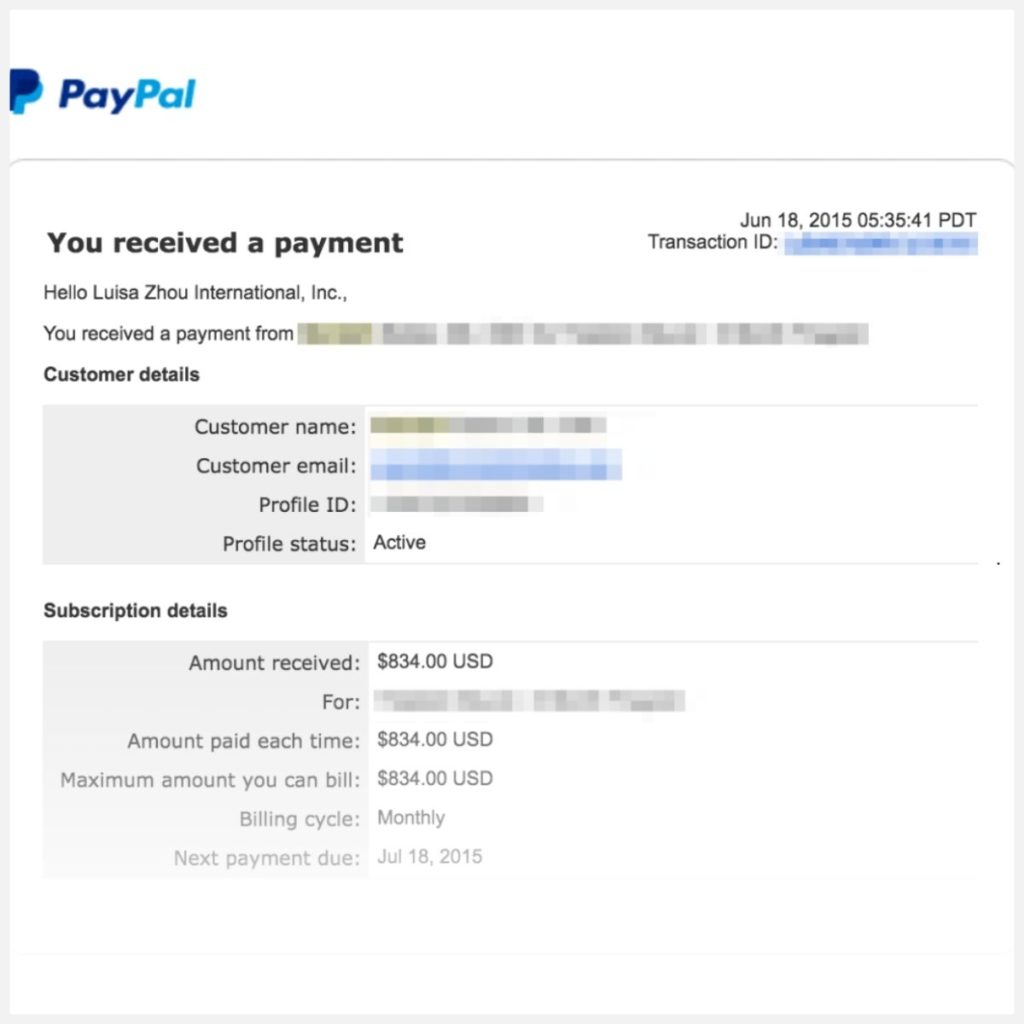
But when I tried to sell that same coaching offer to other people, who I hadn’t helped for free for so long, they said, “That’s too much.”
No wonder:
At the time, I didn’t have any reputation online and no social proof.
I decided to lower my rate to $1,500 for a 3-month package to get a few quick wins. That’s when things started moving again and people were happy to pay my rates.
After three clients at this price point, I shifted back to $5,000.
Basically, a 6-month package is too big of a commitment if you’re a new coach.
Instead, make it easy for people to say “yes” with a smaller offer.
And when you have enough testimonials, move on to a bigger package.
How do you name your coaching offer?
Your coaching package doesn’t really need a name.
Instead of finding the “perfect” name (which you can anyway change later), it’s MUCH more important that you focus on getting your first clients.
Instead of risking that you use a “clever” (but confusing) name, you can simply say:
“Private coaching to get (result)” or “Bootcamp to get (result)”
One of my bestselling offers was called “Business Bootcamp.” The name didn’t sell my offer–the relationship I had with my audience did.
So don’t overthink your name and go for whatever explains your offer the best.
Other words you can use are:
- Consulting
- Framework
- Method
- Blueprint
- Program
- Transformation
- Strategy
Get the Ultimate Guide
for building a
6-Figure Coaching Business so you can achieve more freedom!
How many clients can you take on?
How many high end coaching packages can you sell before you reach your limit?
After all, there are only so many coaching sessions or so much email support and overall coaching work you can schedule in a certain period of time.
I reached my limit at 10 clients. I would say this is the industry standard.
After that, your business becomes difficult to manage.
At this point, you can start selling other offers such as group packages (which we talk more about below).
But what should your high end coaching rates look like?
Let’s take a look.
How should you price your coaching package?
We’ve covered how to structure and create your coaching package.
Now, let’s go over pricing.
There are pretty much three ways in which you can do this:
- Package rate
- Monthly rate
- Hourly rate
My personal favorite is to charge per package.
The reason is simple:
Monthly and hourly commitments don’t set out a tangible goal for your clients.
Pricing your 3 and 6-month coaching packages
When you’re just starting out, you shouldn’t overthink your rate.
Instead, focus on getting clients, helping them get results, and then increasing your rates.
The best price point? Start with $1,500 paid-in-full and $550 paid month-by-month for a 3-month coaching program.
The reason you’re charging more for monthly payments (about 10-20%) is that it’s increased convenience for your clients and more risk to you.
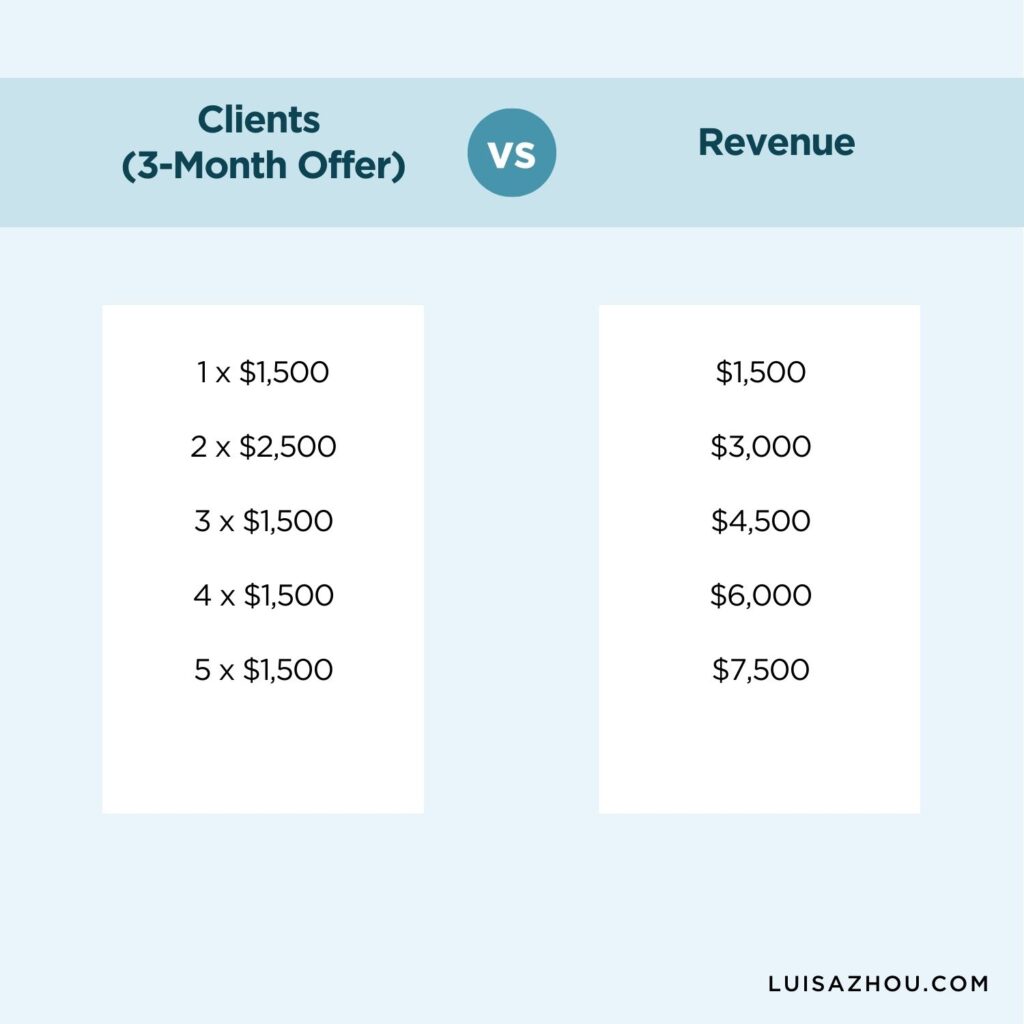
And remember: People are paying for results, not your time. If you position it like that, you’re offering a high-value trade.
Once you have a few testimonials and move to a 6-month package, a good price point is $5,000.
From there, price your package according to your results and what feels good to you.
Feel like you’re not worth it?
You might be thinking, “Who am I to charge this much?”
The first coach I ever worked with told me flat out, “That’s too much” when I said I wanted to charge $5,000 for a 6-month coaching package.
That made me second-guess my price. Was I asking for too much?
But you also have to realize this:
First, I don’t subscribe to people saying, “Charge your worth.”
What does that even mean? Nobody pays for someone’s worth, they pay for the transformation they get.
Second, if you’re confident in the value you bring, what you’re charging should be a great investment.
And even if $1,500, $5,000 or $10,000 can sound like big numbers, they aren’t necessarily. When I first sold a coaching package and wanted to figure out what I wanted to charge, I did the math.
I figured I would be doing weekly calls, which would end up at 12 hours over a six-month period. And I factored in the time I would spend on supporting my clients through email, as well as preparing for calls, all that type of work.
Wit that workload, my hourly rate was around $60.
$60/hour is actually not that much, especially when you factor in taxes and other expenses (internet, the resources you use to educate yourself, and so on).
This was a bit less than what I was making hourly at my 9-5 and having done this calculation, my rate felt fair in terms of the value I offered.
(To compare, Harvard Business Review reports that the median hourly cost of coaching is $500.)
And ultimately, the value of your coaching isn’t in the number of sessions you offer or any other features. Instead, it’s about the transformation your clients get.
Let me explain:
Your clients care about the results you help them get. That’s what they pay for, not the time you spend supporting them.
Your ideal clients couldn’t care less about whether you spend 5 hours or 10 hours helping them, as long as you support them in getting results.
Here’s more on coaching pricing:
What should your coaching package look like, though?
Here’s what you need to know.
What should a coaching session include?
When I got my first client, I was happy for the money I had just made… But then reality hit me: How could I, who had never coached anyone, get through our coaching calls?
I’ve always been something of an over-preparer, so I did what I always do: I prepared so much that NOTHING could go wrong.
I spent three hours preparing a one-hour call and wrote down every single word I would say during the call.
Then, I did the same thing for the second and third call.
Now, I’m not saying that you need to prepare for three hours for your coaching calls (I just love to feel prepared).
But do whatever it takes for you to be confident when you’re first starting out.
For example, before your first call, map out what you’ll cover during the call.
At the end of your coaching session, you know what people will need to work on for the second call. Then, you prepare for that call in the same way you did for the first call.
After about three clients, you will start to see patterns in client questions, which will decrease the time you put into preparing for sessions.
By then, you’ve already created all the material, like PDFs and worksheets, for your clients–you’ve essentially gotten paid to create material for your coaching business.
Your clients feel supported and you get raving testimonials that help you get more clients.
And by client #5-6, you will most likely have an efficient process in place.
With your system in place, you can decrease the number of calls you offer during your 3-month coaching package (because by now, you know your client base intimately). You might go for 45-minute long calls instead of an hour or modify the length of your services.
I talk more about planning your first call here:
What about group programs?
Once you’ve reached your limit with your individual services, you might want to create an offer that is easier to sell to more clients, such as group coaching programs.
In that case, you basically take the same content you develop through your individual coaching.
You can set up weekly group calls instead of private coaching calls and offer a price close to your private coaching offer.
The value is still the same if not greater, as people are able to learn from other group members.
Get the Ultimate Guide
for building a
6-Figure Coaching Business so you can achieve more freedom!
Examples of coaching packages
Now you know how to create coaching packages that sell. Want a few examples of what they can look like in real life? Here are some of the offers that my own clients have put together and are selling successfully.
Life coaching package
Claudia Parada, Energy Coach
My student Claudia, an Energy Coach, offers a 3-month energy coaching package and a group program.
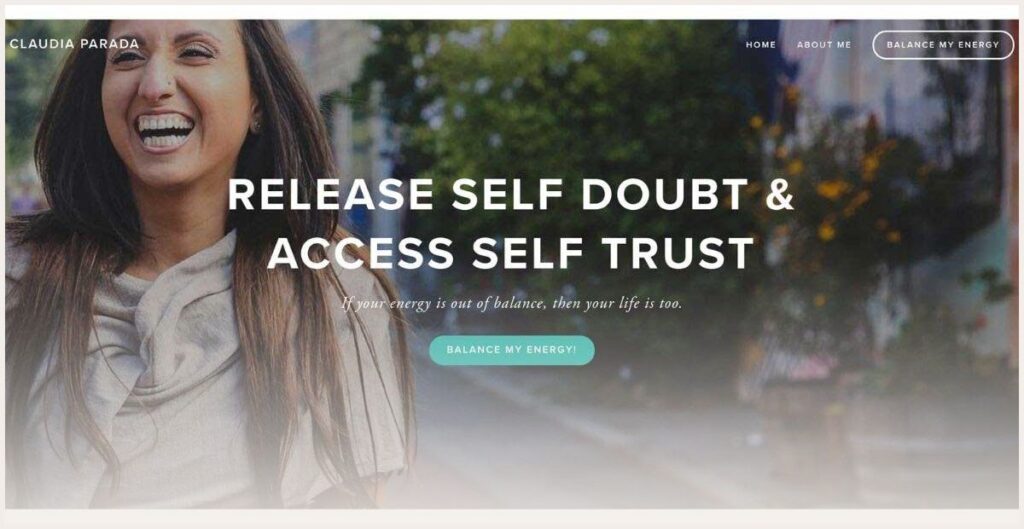
Health coaching package
David Alsieux, Health Coach
David helps his clients get healthy with herbs. He started out offering a 3-month coaching package and has since then transferred to online courses.
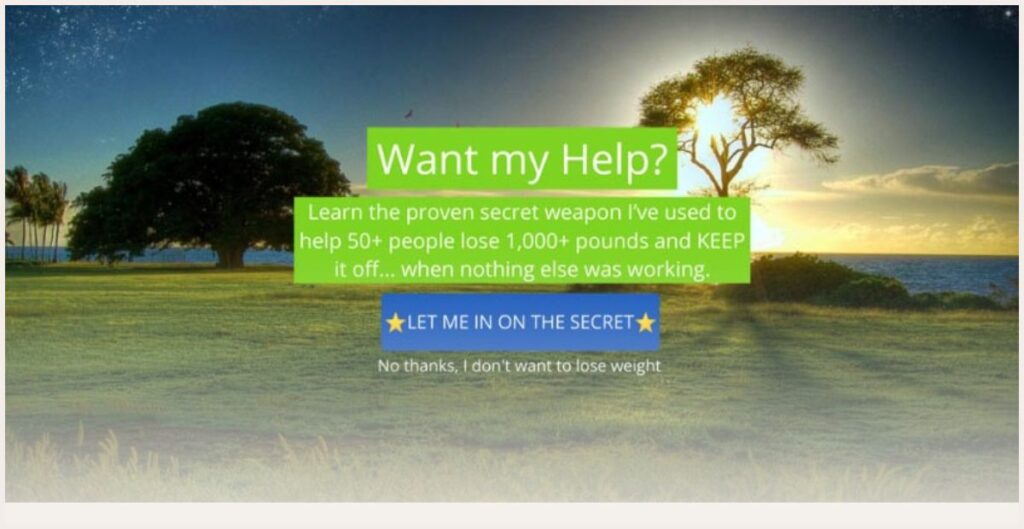
Career coaching package
Emily Liou, Career Coach
Emily started out offering a career coaching program. Today, she offers group coaching packages, courses, and accelerators.
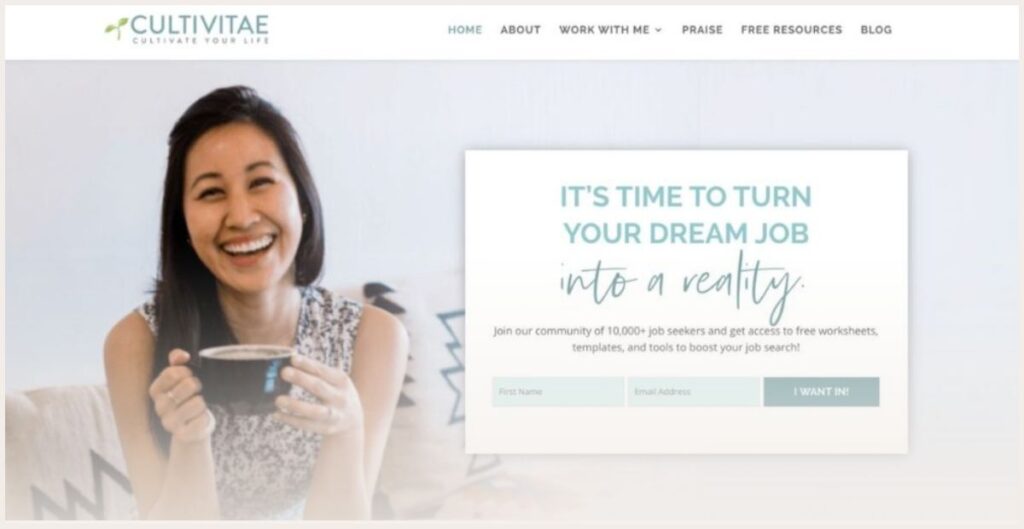
Adunola Adeshola, Career Coach
Adunola is a career coach for millennials. She offers private coaching, as well as group programs and courses.
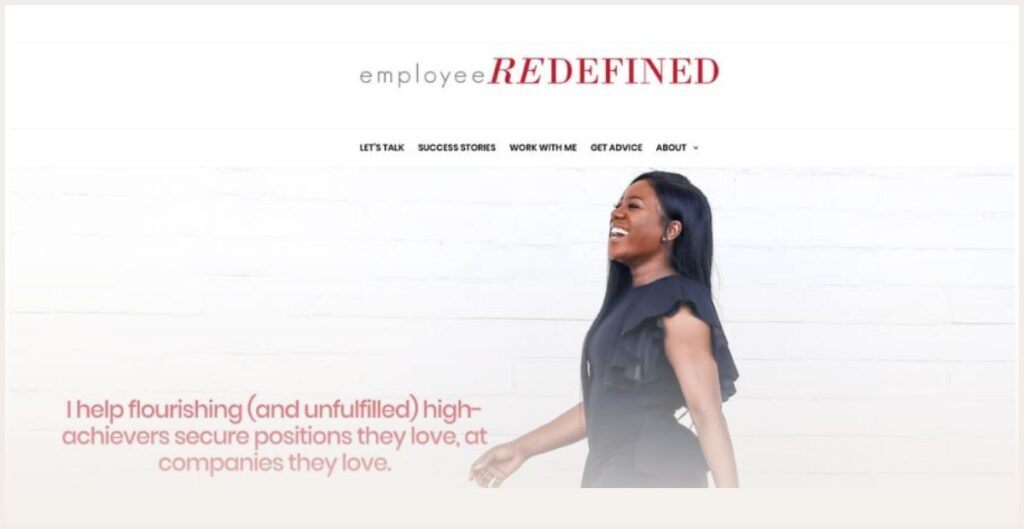
What’s next?
That’s it, now you know how to put together a coaching package that sells.
What it comes down to is remembering that you’re selling a transformation and that you shouldn’t overthink your coaching packages or pricing.
Creating a high-end coaching package is key for building a sustainable and enjoyable coaching business.
But it’s also step 1… How do you build your coaching business to a profitable, six-figure business?
Get my FREE blueprint to find out:
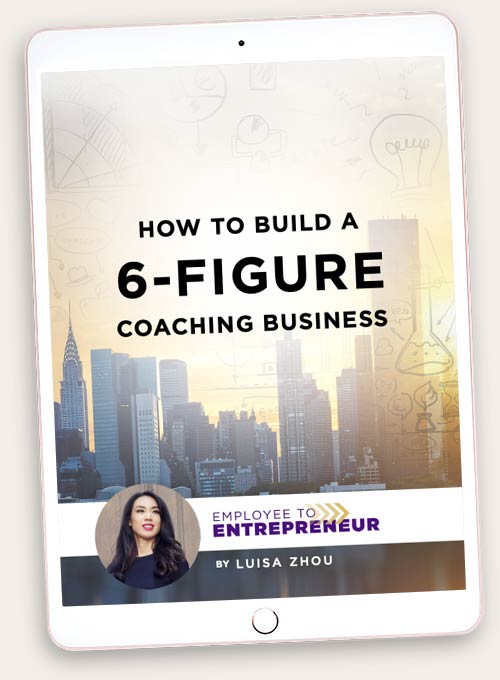
Want to Build a 6-Figure Coaching Business So You Can Achieve More Freedom?
Get Instant Access To My FREE Ultimate Guide Below!
When you sign up, you’ll also receive regular updates on building a successful online business.
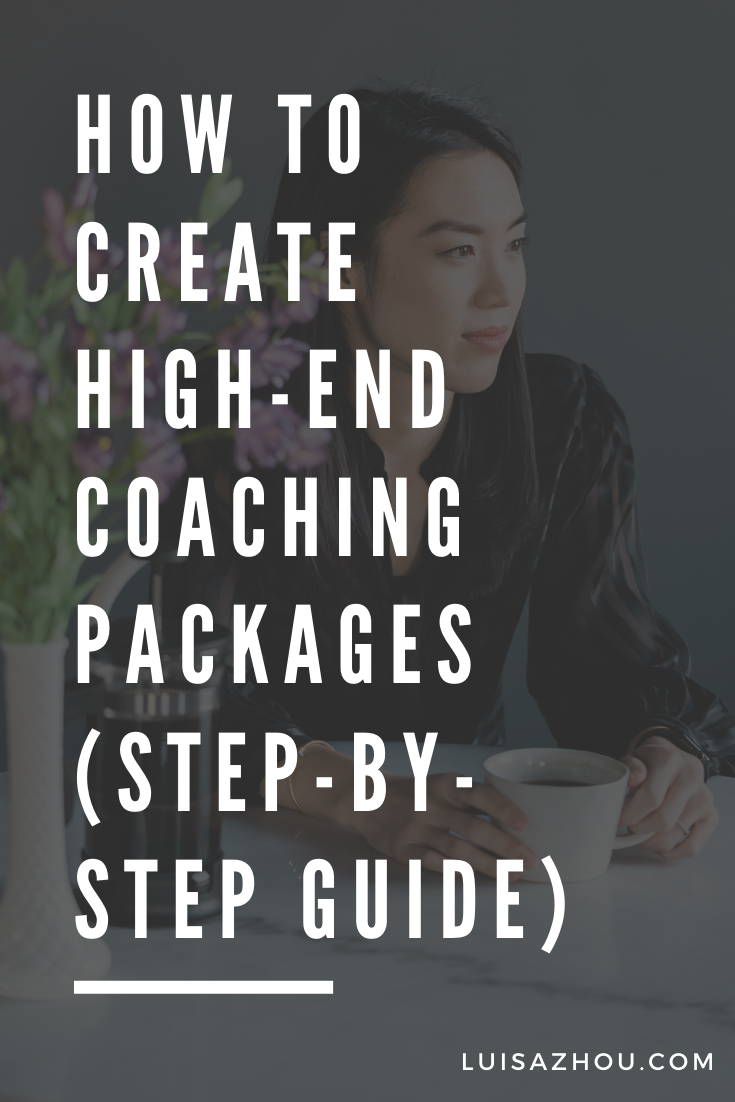




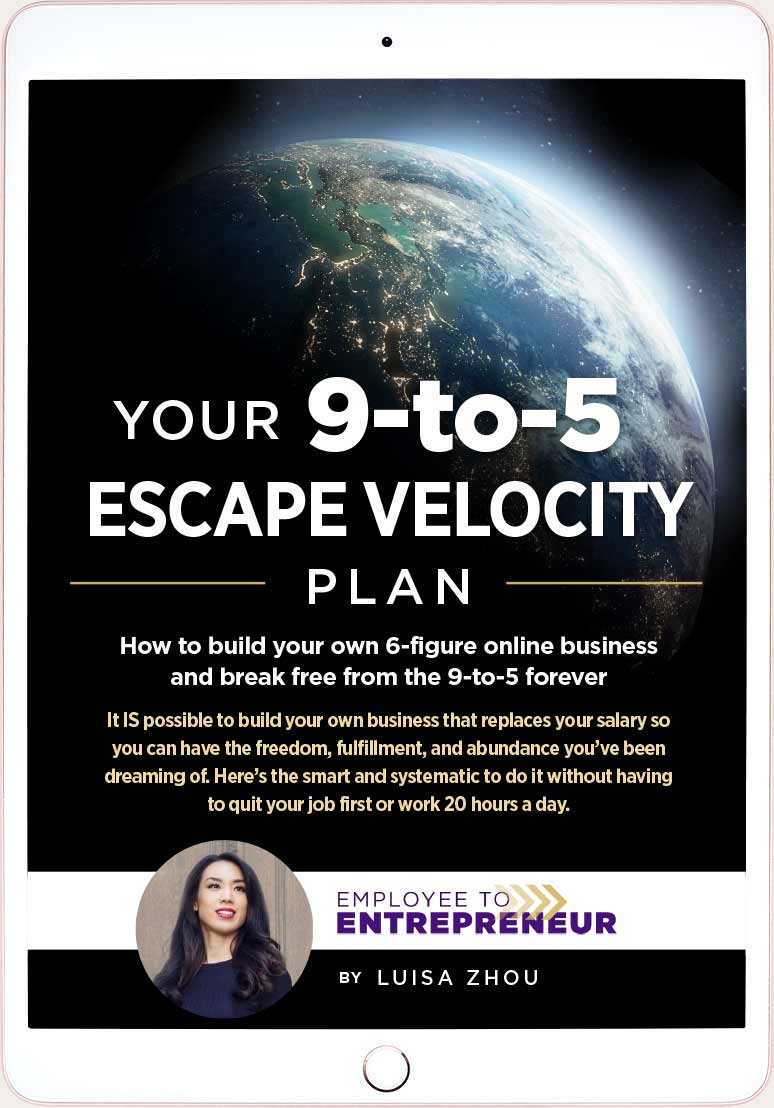


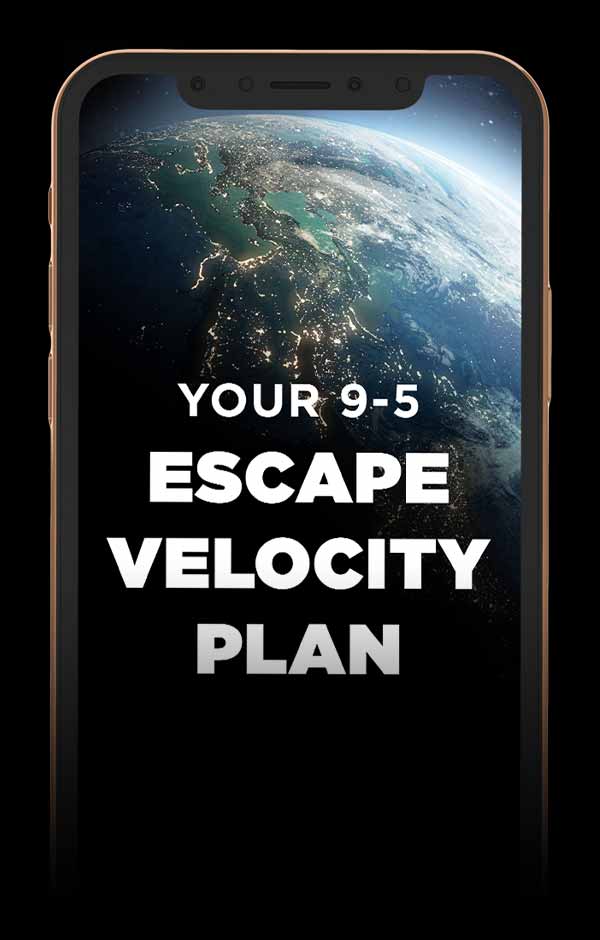
6 Responses
Coaching packages can sell easily and you can sell them for higher prices too. It is the best type of business to have these days.
Wauw! Thank you for all that information! I am just in the middle of creating my first coaching package, and your post just made it a million times easier. Thank you. 🙂
Love hearing that!! 🙂 Good luck with your first coaching package!
Great information! I loved he straight and to the point information you shared! Getting ready to do my website.. it helps immensely
Luisa, I absolutely love your candor and clarity. Thanks for keeping the info solid, power-packed and practical. I’m on my way to nailing my 1st few clients and your article helped me immensely! Thanks again!
Extremely informative and to the point. Thank you so much for this article. 🙌🏼🙏🏼